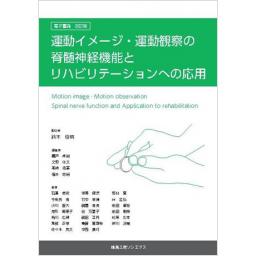1) 小森哲夫・他:F波の波形と出現頻度. 臨床脳波 30:1-6, 1988
2) Suzuki T, et al.:Excitability of the spinal motor neuron pool and F-waves during isometric ipsilateral and contralateral contraction. Physiotherapy Theory and Practice 9:19-24, 1993
3) Panayiotopoulos CP:F chronodispersion:a new electrophysiologoical method. Muscle Nerve 2:68-72, 1979
4) Eisen A, et al.:Amplitude of the F-wave:a potential means of documenting spasticity. Neurology 29:1306-1309, 1979
5) 阿部達哉:F波と神経疾患. 臨床神経生理学 16(4), 175-186, 2018.
6) Peioglou-Harmoussi, et al:F-responses:a study of frequency, sharp and amplitude characteristics in healthy control subject. J Neurol Neurosurg Psychietry 48(11), 1159-1164, 1985.
7) Suzuki T, et al:F-wave waveform values based on the correlation coefficient of each waveform increased following improved voluntary movements in a patient with cerebrovascular disease:a case study with long-term follow-up. Int J Neurorehabilitation 3(2):1000206, 2016.
8) 小松菜生子ら:健常者における異なる筋収縮強度での随意運動時のF波, 関西理学 16, 69-77, 2016.
9) Elisabeth C, et al:Generation of Repeater F wave in healthy subject. J Clin Neurophysiol 34(3), 236-242, 2017.
10) Todo M, et al., Application of F-waveform for the effect of physical therapy relationship between the correlation coefficient of the f-wave waveforms and waveform identification by investigators. Int. J Neurorehabilitation 4(4):1000287,2017.
11) Todo M, Fukumoto Y, Tani M, et al:Mismatch between Correlation Coefficient and Visually Evaluation for Similarity of F-wave WaveformInt J Neurorehabilitation 6(3), 1000350, 2019.
12) Kimura J:Electrodiagnosis in Diseases of Nerve and Muscle:Principles and Practice. 2nd Edition. pp. 332-335, Davis, Philadelphia. PA, 1989
13) Liberson WT, et al.:"H" reflexes and "F" waves in hemiplegics. Electromyogr Clin Nurophysiol. 17:247-264, 1977
14) Fisher MA:F response analysis of motor disorders of central origin. J Neurol Sci 62:13-22, 1983
15) Fisher MA, et al:Assessing segmental excitability after acute rostral lesions. I. The F response. Neurology 28:1265-1271, 1978
16) 鈴木俊明・他:脳卒中片麻痺患者の安静時F波の特性. PTジャーナル 27:277-281, 1993
17) 高田俊和・他:F波の刺激条件と波形の再現性の検討. 臨床脳波 35. 302-309, 1993
18) 中角祐治・他:随意収縮下の筋の後期応答-F波とH反射の鑑別について-. 脳波と筋電図 18:54-59, 1990
19) Suzuki T, et al.:Characteristic appearance of the H-reflex and F-wave with increased stimulus intensity in patients with cerebrovascular disease. Electromyogr and Clinical Neurophysiol. 42:67-70, 2002
20) 鈴木俊明・他:F波出現を認めなかった脳血管障害片麻痺患者の神経生理学的特性. 理学療法学 24:16-22, 1997
